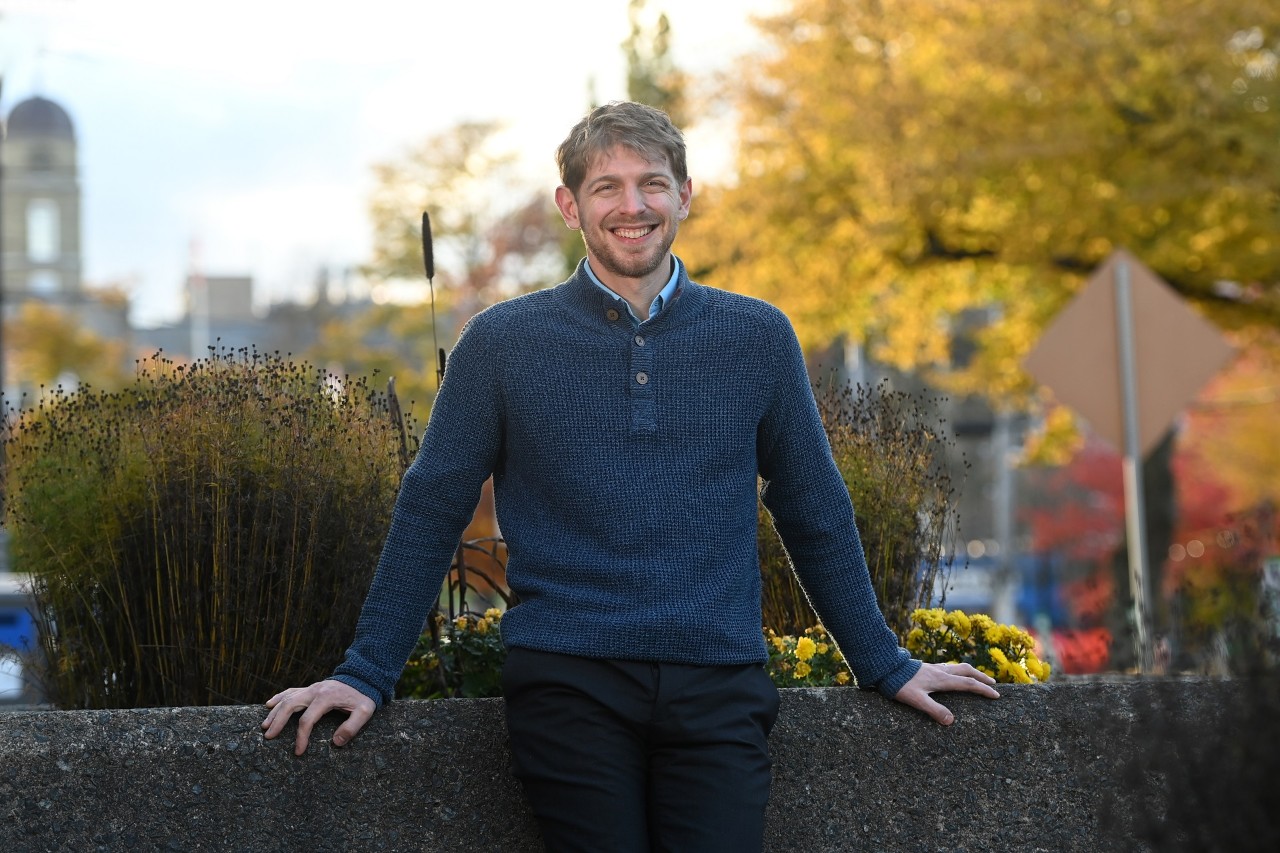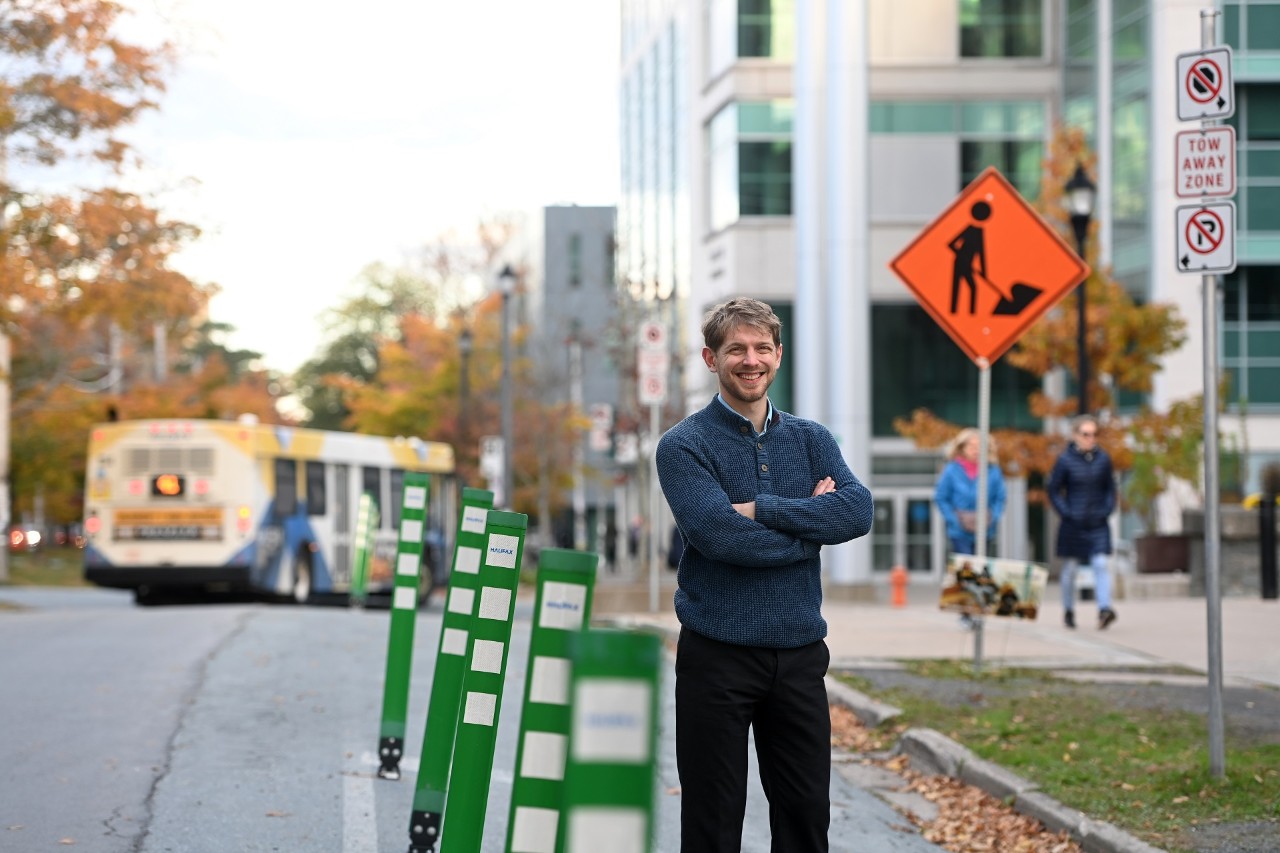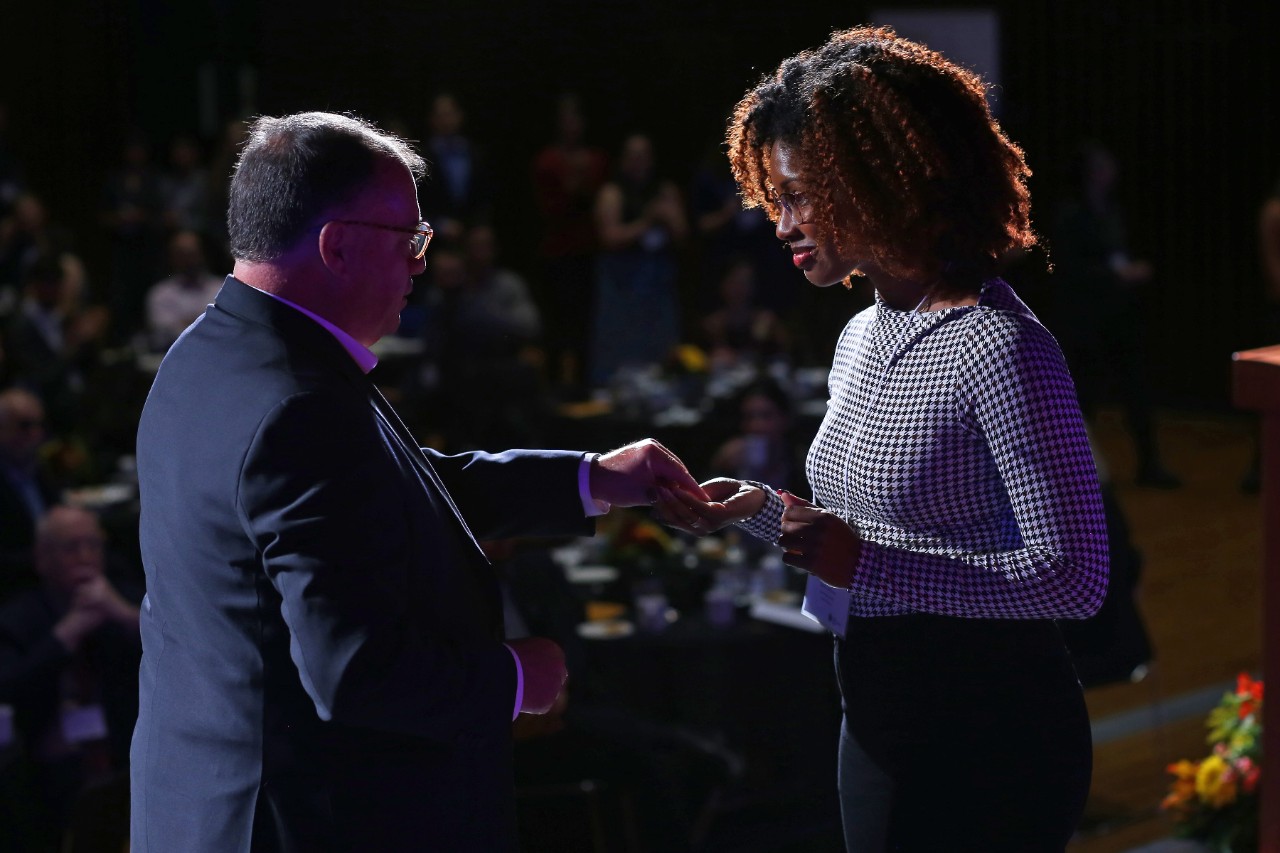The first time Tristan Cleveland travelled from rural Nova Scotia to visit his brother in Halifax, he had a sinking feeling. The urban landscape he encountered was far removed from the forests, caves, and beaches he frequented while growing up on the province’s south shore. To him, it didn’t seem built to support human health and happiness.
“I thought, ‘Beavers build good environments for themselves, and so do termites, so why do humans build environments that fail to support our most basic health and well-being needs?’” says Tristan, a Killam Scholar who is earning a PhD in political science at Dal. “We have urban planners, engineers, and architects who continue to create communities where people face high rates of diseases, such as diabetes, have low rates of social connections, and do not want to spend time in the public realm. I don’t think that is okay.”
Tristan is hoping to change that. He is exploring the link between urban design and health, and ways to help communities who want to make their cities more human-centred to achieve their goals. His aim is to identify tools and standards to incrementally shift from car-dependent designs to mixed-use—walking, cycling, public transit—designs. He says these communities are not only more prosperous in terms of tax revenue but also more appealing from a lifestyle perspective. The challenge is that the car-dependent design that typifies most North American communities is self-reinforcing.
“When you have a landscape of parking lots, like the big box stores in Bayers Lake, you have new developments that mirror that and further encourage people to travel by car,” he explains. “That results in congestion, so residents put pressure on counsellors to fix the problem, and municipal engineers end up expanding roads. That further reinforces car dependency.”

Breaking that cycle means identifying what has worked. Tristan is looking at four communities in the United States and Canada that have attempted to transition, in whole or in part to mixed-use – becoming more transit-oriented and walkable – to assess their motivations, barriers, successes, and failures. “They're all being pulled in different directions, so it is fascinating to see where they are in their journey and the dynamics that are influencing development,” Tristan says.
While he has not found any community that has fully transitioned to mixed-use, many have made substantial progress. Government, he notes, has a key role to play through establishing standards that developers can follow, interventions and ongoing support. “My goal is to give government rules that they can implement for car-dependent and mixed-use communities,” Tristan says. "If professionals directly contradict mixed-use design standards in a community that officially aims to become mixed-use, that should be an offence for which they can lose their license."
Cleveland has published his findings in several journal articles and will be working on his thesis in the coming months. But these are the first steps on a longer path. “The longer-term goal is to work with professional associations to establish clear guidelines for different categories of development, and to strengthen the responsibility and education of planners, engineers, and architects so that the public can rely on them to create great places to live,” he says. “That's my life goal, and I feel very privileged that I am able to work on something that means so much to me.”
Photo credits: Danny Abriel

